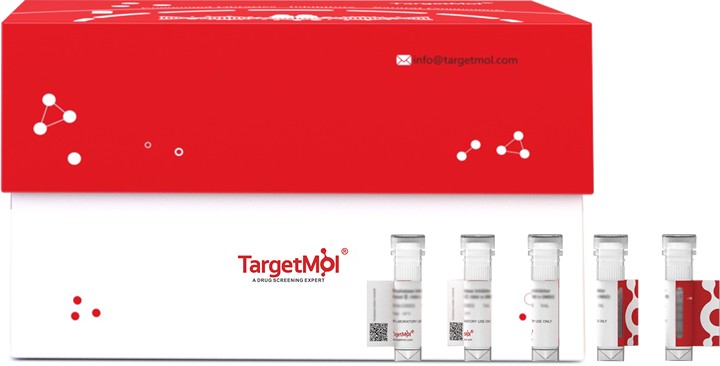Shopping Cart
- Remove All
 Your shopping cart is currently empty
Your shopping cart is currently empty
Canine parvovirus type 2 (CPV-2) VP2 Protein (His & Myc) is expressed in E. coli expression system with N-10xHis and C-Myc tag. The predicted molecular weight is 65.9 kDa and the accession number is P61826.

| Pack Size | Price | Availability | Quantity |
|---|---|---|---|
| 20 μg | $360 | 20 days | |
| 100 μg | $745 | 20 days | |
| 1 mg | $2,530 | 20 days |
| Biological Activity | Activity has not been tested. It is theoretically active, but we cannot guarantee it. If you require protein activity, we recommend choosing the eukaryotic expression version first. |
| Description | Canine parvovirus type 2 (CPV-2) VP2 Protein (His & Myc) is expressed in E. coli expression system with N-10xHis and C-Myc tag. The predicted molecular weight is 65.9 kDa and the accession number is P61826. |
| Species | CPV-2 |
| Expression System | E. coli |
| Tag | N-10xHis, C-Myc |
| Accession Number | P61826 |
| Synonyms | Coat protein VP2,Capsid protein VP2 |
| Amino Acid | GGGGGSGGVGISTGTFNNQTEFKFLENGWVEITANSSRLVHLNMPESENYRRVVVNNMDKTAVNGNMALDDIHVQIVTPWSLVDANAWGVWFNPGDWQLIVNTMSELHLVSFEQEIFNVVLKTVSESATQPPTKVYNNDLTASLMVALDSNNTMPFTPAAMRSETLGFYPWKPTIPTPWRYYFQWDRTLVPSHTGTSGTPTNIYHGTDPDDVQFYTIENSVPVHLLRTGDEFATGTFFFDCKPCRLTHTWQTNRALGLPPFLNSLPQSEGATNFGDIGVQQDKRRGVTQMGNTNYITEATIMRPAEVGYSAPYYSFEASTQGPFKTPIAAGRGGAQTYENQAADGDPRYAFGRQHGQKTTTTGETPDRITYIAHHDTGRYPEGDWIQNINFNLPVTNDNVLLPTDPIGGKTGINYTNIFNTYGPLTALNNVPPVYPNGQIWDKEFDTDLKPRPHVNAPFVCQHNCPGQLFVKVAPNLTNEYDPDASANMSRIVTYSHFWWKGKLVFKAKLRASHTWNPIQQMSI |
| Construction | 30-553 aa |
| Protein Purity | > 85% as determined by SDS-PAGE. |
| Molecular Weight | 65.9 kDa (predicted) |
| Endotoxin | < 1.0 EU/μg of the protein as determined by the LAL method. |
| Formulation | If the delivery form is liquid, the default storage buffer is Tris/PBS-based buffer, 5%-50% glycerol. If the delivery form is lyophilized powder, the buffer before lyophilization is Tris/PBS-based buffer, 6% Trehalose, pH 8.0. |
| Reconstitution | Reconstitute the lyophilized protein in sterile deionized water. The product concentration should not be less than 100 μg/mL. Before opening, centrifuge the tube to collect powder at the bottom. After adding the reconstitution buffer, avoid vortexing or pipetting for mixing. |
| Stability & Storage | Lyophilized powders can be stably stored for over 12 months, while liquid products can be stored for 6-12 months at -80°C. For reconstituted protein solutions, the solution can be stored at -20°C to -80°C for at least 3 months. Please avoid multiple freeze-thaw cycles and store products in aliquots. |
| Shipping | In general, Lyophilized powders are shipping with blue ice. Solutions are shipping with dry ice. |
| Research Background | Capsid protein self-assembles to form an icosahedral capsid with a T=1 symmetry, about 22 nm in diameter, and consisting of 60 copies of two size variants of the capsid proteins, VP1 and VP2, which differ by the presence of an N-terminal extension in the minor protein VP1. The capsid encapsulates the genomic ssDNA. Capsid proteins are responsible for the attachment to host cell receptor TFRC. This attachment induces virion internalization predominantly through clathrin-endocytosis. Binding to the host receptors also induces capsid rearrangements leading to surface exposure of VP1 N-terminus, specifically its phospholipase A2-like region and nuclear localization signal(s). VP1 N-terminus might serve as a lipolytic enzyme to breach the endosomal membrane during entry into host cell. Intracytoplasmic transport involves microtubules and interaction between capsid proteins and host dynein. Exposure of nuclear localization signal probably allows nuclear import of capsids. |

Copyright © 2015-2025 TargetMol Chemicals Inc. All Rights Reserved.